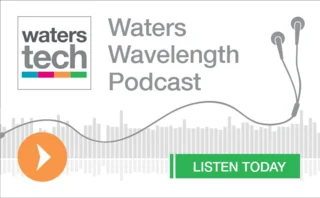Anthony Malakian: A Postscript on Form PF

After months of planning, debate, and more planning, the first wave of hedge funds have finally filed their Form PFs via the Financial Industry Regulatory Authority (Finra). Those firms with $5 billion or more in regulatory assets under management will once again file at the end of November, while most other hedge funds will file next year.
For this issue, Waters spoke with a large number of industry participants in order to paint a picture about what the greatest challenges were facing those initial filers, and what smaller and mid-sized funds should learn from their effort (see page 22).
There are a few points I’d like to make before I call it a night on Form PF. One thing I found quite interesting was the lack of faith that several hedge funds had in the vendor community in following through on their Form PF promises. Judging by the vast number of press releases that have come into my inbox touting Form PF capabilities, it’s probably safe to assume that some of those firms were over-selling.
While it makes sense to use this new regulatory requirement—something that doesn’t demand a massive IT overhaul, but that is strongly underpinned by technology—as a way to introduce products and services to hedge funds panicking about this first round of filings, the reputational damage for non-delivery can be damning. It is clear that the chief compliance and operating officers at these funds are in communication with one another. There isn’t a competitive advantage to be gained from Form PF filings—just headaches. The challenges are largely definitional, which means that in a show of solidarity, they are willing to talk to one another. So you can be sure they are also trading notes about which vendors and consultancies have failed to come through on their claims.
On the technology side, there are benefits that firms can gain from properly attacking the issue of Form PF—from mapping, to audit trails, to data management, to risk management. It’s not about revolutionizing one’s systems—it’s simply about adding efficiency. Compliance reporting is always going to be a pain, but the savviest of firms will use it as an excuse or a driver to improve processes that are often taken for granted.
Demands like Form PF aren’t meant to be exciting, but they don’t have to be a nightmare, either.
Prep, But Not Too Much
In conversations with industry participants, it has became abundantly clear that the amount of data being provided, the number of pages being filed, and the ability to pull all that together, is more difficult than most had initially anticipated. Preparation is vital. Additionally, testing will prove invaluable as the XML filing format for Finra can be quite complex.
Even if your filing date isn’t until April 2013, it would be foolish not to begin the process of vetting vendors and consultancies, setting up internal procedures and figuring out who will be responsible for what, and gaining a deeper understanding of what is being asked for, as many definitions that the Securities and Exchange Commission’s (SEC’s) answers to frequently asked questions may not jibe with your internal definitions.
Furthermore, it’s important to understand that this is not a process that can be solved by one, two or three people. This has to be viewed as a cross-company initiative—IT and operations, the risk department, accounting, treasury, the trading desk, and compliance.
Still, you should be aware that changes will likely come down the pike, sometimes just weeks before the filing deadline. In early August there was a “decimal” change that affected some hedge funds’ strategy and regional exposure fields, according to Phil Christianson of ConvergEx, who says that Finra had already told him more changes would come before the end of September.
It’s highly probable that as the SEC examines the data, more changes will come to help them in their cause of checking for systemic risk. Be adaptable and be patient. Demands like Form PF aren’t meant to be exciting, but they don’t have to be a nightmare, either.
Only users who have a paid subscription or are part of a corporate subscription are able to print or copy content.
To access these options, along with all other subscription benefits, please contact info@waterstechnology.com or view our subscription options here: https://subscriptions.waterstechnology.com/subscribe
You are currently unable to print this content. Please contact info@waterstechnology.com to find out more.
You are currently unable to copy this content. Please contact info@waterstechnology.com to find out more.
Copyright Infopro Digital Limited. All rights reserved.
As outlined in our terms and conditions, https://www.infopro-digital.com/terms-and-conditions/subscriptions/ (point 2.4), printing is limited to a single copy.
If you would like to purchase additional rights please email info@waterstechnology.com
Copyright Infopro Digital Limited. All rights reserved.
You may share this content using our article tools. As outlined in our terms and conditions, https://www.infopro-digital.com/terms-and-conditions/subscriptions/ (clause 2.4), an Authorised User may only make one copy of the materials for their own personal use. You must also comply with the restrictions in clause 2.5.
If you would like to purchase additional rights please email info@waterstechnology.com
More on Regulation
2026 will be the year agent armies awaken
Waters Wrap: Several AI experts have recently said that the next 12 months will see significant progress for agentic AI. Are capital markets firms ready for this shift from generative AI to agents?
Despite regulatory thaw in US, major questions remain globally for 2026
From crypto and tokenization to the CAT to consolidated tapes to T+1’s advancement, the regulatory space will be front and center in the New Year.
Will overnight trading in equity markets expand next year? It’s complicated.
The potential for expanded overnight trading in US equity markets sparked debate this year, whether people liked it or not.
Waters Wavelength Ep. 342: LexisNexis Risk Solutions’ Sophie Lagouanelle
This week, Sophie Lagouanelle, chief product officer for financial crime compliance at LNRS, joins the podcast to discuss trends in the space moving into 2026.
Citadel Securities, BlackRock, Nasdaq mull tokenized equities’ impact on regulations
An SEC panel of broker-dealers, market-makers and crypto specialists debated the ramifications of a future with tokenized equities.
FIX Trading Community recommends data practices for European CTs
The industry association has published practices and workflows using FIX messaging standards for the upcoming EU consolidated tapes.
Interview: Linda Middleditch, Regnology
Regnology’s Linda Middleditch discusses its acquisition of Wolters Kluwer’s FRR business
Tokenized assets draw interest, but regulation lags behind
Regulators around the globe are showing increased interest in tokenization, but concretely identifying and implementing guardrails and ground rules for tokenized products has remained slow.








